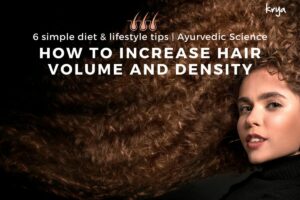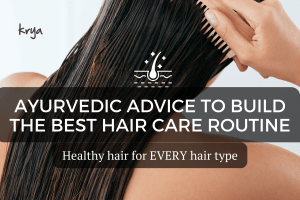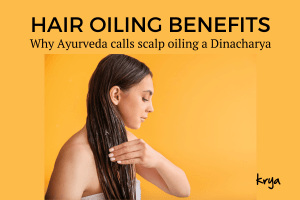This post was last updated on December 20, 2022 by srinivas krishnaswamy
My biggest hair problem as a teenager was hair that wouldn’t dry fast. I had waist length hair back then which was as thick as my palm. My hair literally took hours to dry, and before I started using shampoo, I would sometimes have to comb out clumps of shikakai from my home made hair wash after it dried.
Yup, pretty much a case of my diamond shoes being too tight.
Of course, I grew up. Started to use synthetic shampoos, and then of course, all hell broke loose. Because just a few years later, my biggest hair problem, was that my hair, simply would not grow.
Instead, I grappled with hair that broke easily, was thinning everywhere, and just didn’t grow as fast as it used to. So to keep the focus off my non growing hair, I kept cutting it shorter, until at one point, I sported a pageboy cut.
The reasons for my hair’s state are now quite apparent – I committed every single one of those 5 hair mistakes we wrote about last time on the Blog. If there was a treatment or a new hair product out, you could be sure I was right there, asking for it.
But today I want to focus on the single hair mistake almost all of us are committing – and this one is a hara kiri (a hair-a-kiri?) – using a synthetic shampoo.
A dated report I’m reading tells me that the world spends close to 60 billion dollars every year buying shampoo. Yes, you read that right. We are as a race, spending collectively the equivalent of the GDP of Zambia,or Slovenia, on just Shampoo!
The modern shampoo was “invented” in the 1920s. Of course, this news was not as exciting for people in general because all of us had been washing our hair with herbs, clays and water for time immemorial. Shampoos therefore cleverly position themselves as modern, scientific products that provided a great experience and gave us what we did not have with herbs – Lots & Lots & Lots of Copious lather.
Today’s shampoo formulation has evolved, dangerously from its 1920s version. Besides being actually harmful for your hair, a shampoo today contains ingredients that are extreme irritants, environmental toxins and are even carcinogenic.
What’s in that foaming, coloured, scented mess?
1. Detergent
The most important ingredient in a shampoo is the part that cleans. And this comes ingredients like SLS, SLES or even ALS (Ammonium lauryl sulphate) and its ethoxylated cousin ALES (ammonium Laureth sulphate).
We are extremely concerned about the all pervasive and toxic nature of SLS and SLES – you will find SLS / SLES in almost everything that foams and is a cleanser of some sort from your laundry detergent to your baby wash and of course your shampoo. We actually spent a whole post talking about the dangers of SLS and SLES .
Sulphates were initially used as cheap detergents – typically in car washes and mechanic workshops to easily cut through axle grease. They are today widely used to lift off grease from hair and to clean your body, face and even your clothes.
We have 3 major concerns over the almost obsessive use of SLS and SLES by the consumer product industry:
Sebum stripping ability
The first is that both these Lauryl Sulfates are almost too effective at stripping hair (and skin) of its protective layer of oil – the result, all the vital and necessary sebum in your hair which protects the cuticles and its integrity is stripped out, leaving it dull and lifeless.
Irritant nature
The Journal of the American college of Toxicology notes that concentrations of SLS that are as low as 0.5% (and upto 10%) cause slight to moderate skin irritation, while 10% – 30% routinely causes skin corrosion and severe irritation. Ironically, in lab testing of skin care products like healing creams or lotions, skin is first irritated using SLS before it can be healed with the test product! SLS also causes severe eye irritation which is a point of note if you want to use it in a shampoo that is definitely going to reach your eyes.
Role in cell destruction and premature aging
This should get your interest right now. SLS is described as a protein de-naturing compound. So with consistent use, it will break down the protein matrix of your hair, effectively stopping hair regeneration and impeding its health.On skin, SLS will disrupt the protein structures in it and could hasten skin aging.
2. Silicones
Silicones like dimethicone or PEG-12 dimethicone are often described as “conditioning agents”. Silicones are an interesting addition to shampoos. They were added precisely because of the detergents in shampoos – because the detergents are harsh , strip sebum and break your cuticular scales, the silicones are added to coat hair.
Silicones are laboratory made chemicals which are made from combinations of silicon, carbon, hydrogen and oxygen. They are flexible and plastic like with a rubbery feel and are used in adhesives, sealants, lubricants, cooking utensils, insulation AND personal care products.
It is important to note here that silicone should be accurately described as a “coating agent” and not a “conditioning agent”. So a silicon cannot “penetrate” or “deep condition” your hair. But what it can do is form a layer on top of your hair, hiding the damage caused by the detergent in the shampoo – and this coating is precisely why it takes so long for you to find out that your hair is damaged (hint: its because your shampoo is doing a darn good cover up job after damaging your hair).
Silicones are found both in hair care products and skin care products. It is the primary ingredient in hair conditioners and is also used in make up products like foundations and primers, because it does the same job of coating over the damage on your skin and helps the rest of the product glide smoother.
Because silicone covers the damaged cuticular scales of your hair, it produces a kind of gloss/ shine – which deceives you into thinking your hair is healthier than it is.
And because it coats your hair, it also decreases the ability of natural oils to penetrate your hair or skin – so if you are regularly using a conditioning shampoo or a conditioner, and trying to oil and restore your hair to health, then chances are that your oiling is not going to be very effective.
If you apply a silicone containing product on your skin, you can have similar bad results – because the silicone coats your skin, it prevents healthy skin functions like sweating, and sloughing off dead cells. You are also probably keeping in dirt, dead cells and bacteria much longer leaving them to linger on your skin. This is probably why people with sensitive or acne prone skin suffer greater breakouts when using silicone containing products (which is almost all synthetic skincare products).
We are still not sure about the toxicity of commonly used silicones like dimethicone. Environment Canada have put this ingredient on their toxics watchlist – what we do know is that in the very least it could be a persistent (lingers on for a very long time), bio-accumulative (stays and builds up within the bodies of fishes and organisms that eat it) environmental toxin.
Here are some possible silicone agents you could find in your shampoo / conditioner: Methicone, Phenyl trimethicone, Dimethicone, Cyclomethicone, Dimethiconol, Dimethicone copolyol.

This isn’t over – far from it. Look out for our next post on Monday for more straight dope on what goes into your synthetic shampoo.
A happy hair month to you!
This article is a part of Krya’s series on healthy and happy hair, which we are writing all this September. Through the Krya healthy hair series, we hope to inform, educate and inspire you to restore your hair to its natural state of great health. Synthetic shampoos and hair products contain a huge host of suspect industrial chemicals that are not just toxic for us to use, but are polluting and toxic to the planet as well. The natural world is full of safe, environmentally sustainable, cruelty free options to care for your hair, and our series will try to present atleast a small part of this exciting world to you.
Consumers love our all natural, synthetic free, gentle hair washes- explore more here.
If you would like to explore our series further, here’s what We’ve written about hair health before this piece:
- What’s the deal with SLS and SLES – and why it shouldn’t come anywhere near you or your hair
- What is your hair supposed to be? A trial? A challenge? Or simply, your best friend
- Is beauty external? We think not
- What should you be looking for on that product label?
- What are the 5 beauty mistakes you are probably committing right now on your hair?




